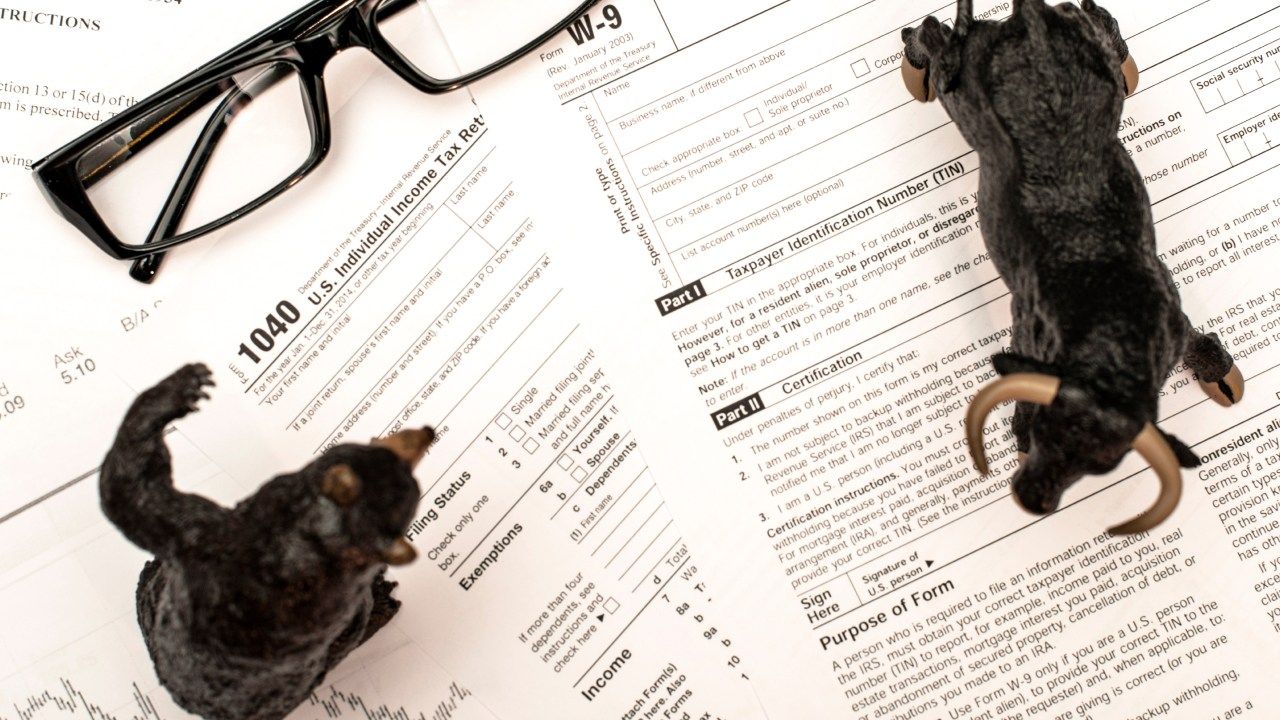
Introduction: Bear vs Bull Market: What's the Difference?
In the ever-evolving world of financial markets, the terms "bear" and "bull" are more than just animal mascots; they symbolize the movements that define economies and investment strategies. The difference between a bear and a bull market is not just in the direction stock prices are heading, but in the opportunities and risks they present to investors. Bear markets, characterized by falling stock prices and pessimism, often signal economic downturns, invoking a cautious approach. Conversely, bull markets are associated with rising stock prices, optimism, and economic growth, encouraging investment. Between these polar opposites lies a vast landscape of strategies, from dollar cost averaging in a diversified portfolio to navigating the intricate timings of buying or selling assets. This introduction ventures into the heart of what distinguishes bear markets from their bullish counterparts, how each occurs, and what history and market watchers have gleaned from past performances. As we delve into the dynamics of bear vs bull markets, remember, investing involves risk, and the only constant in the stock markets is change itself.
Understanding Market Dynamics
"Bear" and "Bull"
The financial markets are often seen through the lens of two dominating spirits: the bear and the bull. A bear market is characterized by falling stock prices, typically by 20% or more from recent highs, reflecting widespread pessimism and negative investor sentiment. This decline often mirrors broader economic downturns and can be triggered by a variety of factors including economic recessions, geopolitical tensions, or financial crises. In contrast, a bull market is marked by rising stock prices, optimism, and confidence in the economy’s strength and future growth. Bull markets are periods of wealth creation, where investors are eager to buy in anticipation of continued gains.
Bear Markets vs. Corrections
While both bear markets and market corrections signify a decline in stock prices, their duration and intensity differ. Market corrections are short-term declines of 10% to 20%, acting as brief pauses in an otherwise upward trending market. They are considered healthy for the market, providing adjustments to overvalued assets. Bear markets, on the other hand, involve a more prolonged and deeper decline, often signaling a weakening economy or financial instability.
What's the Main Difference Between a Bear Market and a Bull Market?
The main difference between bear and bull markets is not just the direction of stock prices but also the underlying economic indicators and investor psychology. Bull markets are driven by strong economic fundamentals, such as low unemployment, high consumer confidence, and rising corporate profits, leading to a sustained period of rising stock prices. Bear markets often begin with a downturn in investor sentiment followed by declining economic indicators, high inflation, and falling corporate earnings, culminating in a sustained period of falling stock prices.
Understanding these dynamics is crucial for investors, as the strategies for investing in bear vs bull markets vary significantly. During bear markets, investors might adopt a more defensive stance, focusing on asset preservation through diversified portfolios and dollar cost averaging. In bull markets, investors often seek to maximize gains by investing in growth stocks and sectors poised for significant returns. Regardless of the market phase, a well-informed investor, guided by market watchers and aware of the economic cycle, can navigate these shifts to make prudent financial decisions, whether that’s selling assets to avoid further losses or seizing the opportunity to invest at a lower price.

Characteristics of Bear and Bull Markets
First Phase of a Bear Market
The onset of a bear market is often marked by high investor optimism ironically close to its peak, just before the downturn begins. This phase is characterized by a gradual shift in investor sentiment from optimism to skepticism. Stock prices start to decline, but many investors believe these drops are temporary. As the market continues to fall, reaching a decline of 20% or more, it officially enters bear market territory. This phase reflects the beginning of widespread pessimism, where economic indicators might still be lagging, and the full impact on the economy may not be evident yet. Historical bear markets, such as those preceding economic recessions or following significant bubbles, show that early recognition and understanding of this phase could guide better investment decisions.
Corrections versus Bears
Understanding the difference between corrections and bear markets is crucial for navigating market dynamics. Corrections are typically short-lived, with stock prices falling 10% to 20% from their peaks. These periods are considered natural market adjustments and often provide buying opportunities for undervalued stocks. Unlike corrections, bear markets signify a more profound and prolonged downturn, with declines exceeding 20%. They often accompany or signal weakening economic fundamentals, such as declining GDP growth, high inflation, and increasing unemployment rates. Recognizing the nature of a downturn – whether a temporary correction or the start of a bear market – is vital for investors to adjust their strategies accordingly.
Notable bear markets, including those during the Great Depression, the dot-com bubble burst, and the financial crisis of 2007-2008, illustrate the significant impact prolonged downturns can have on investment portfolios. These periods often result in a shift towards more conservative investment strategies, emphasizing asset preservation and risk management. Conversely, bull markets, characterized by rising investor confidence and stock prices, encourage a more aggressive investment approach aimed at capitalizing on growth opportunities. Understanding these characteristics and the historical context of bear and bull markets helps investors make informed decisions aligned with their financial goals and risk tolerance.
Investing During Market Fluctuations
Investing in a Bear Market by the Numbers
Investing during a bear market can seem counterintuitive to many investors. However, history shows that bear markets, while challenging, also present unique opportunities for value and growth. The key is understanding the numbers and trends: bear markets tend to be shorter than bull markets, with the average bear market lasting about 9.6 months, compared to the 2.7 years of the average bull market. This suggests that while bear markets are intense, they are also relatively brief periods within the broader economic cycle. Strategies like dollar cost averaging can help investors take advantage of lower stock prices during these times, allowing for potential gains when the market recovers.
How to Invest in a Bear Market
Investing in a bear market requires a strategy that differs significantly from that in a bull market. First and foremost, a diversified portfolio becomes even more critical, as it helps spread out risk across various asset classes and industries. Investors might consider shifting their asset allocation towards more defensive sectors such as utilities, healthcare, and consumer staples, which tend to be less volatile during economic downturns. Utilizing brokerage services for professional advice and maintaining a long-term perspective can also help navigate the bear market's uncertainties.
Fight the Urge to Sell It All
One of the most challenging aspects of a bear market is the psychological pressure it places on investors. Watching the value of investments fall can be distressing, leading many to consider selling their assets to prevent further losses. However, market watchers advise against making hasty decisions based on short-term market movements. Historical data shows that markets have always recovered from downturns, and selling during a bear market can lock in losses and prevent investors from benefiting from the eventual recovery. Instead, maintaining a disciplined approach, focusing on long-term investment goals, and adjusting risk tolerance and investment strategies accordingly can better position investors for growth when the market turns bullish again.

Strategic Moves in a Bear Market
Short Selling in Bear Markets
Short selling is a strategy used by investors who anticipate the price of a stock or asset will decrease in the future. It involves borrowing shares and selling them at the current market price, with the intention of buying them back at a lower price. This strategy can be lucrative during bear markets, where widespread declines in stock prices occur. However, it's important to note that short selling carries significant risk, as it involves betting against market trends and potential losses are unlimited if the market rebounds. Experienced investors and market watchers often use short selling judiciously, considering it a sophisticated strategy best employed with caution.
Hedge with Bonds
Bonds can serve as an effective hedge against the volatility of bear markets. Since bonds typically have an inverse relationship with stocks, they can provide a stabilizing effect on a portfolio when stock prices are falling. During economic downturns, investors tend to move towards safer assets, making bonds attractive due to their fixed income returns and lower volatility compared to stocks. Allocating a portion of an investment portfolio to bonds can help mitigate losses during bear markets, particularly government and high-quality corporate bonds, which are considered less risky.
Hedge with Dividend Stocks
Dividend-paying stocks are another strategic asset class during bear markets. These stocks belong to companies with strong financial health and a history of paying dividends, which can provide investors with a steady income stream even when stock prices are falling. Dividend stocks tend to be less volatile than non-dividend-paying stocks, making them a safer option during economic recessions and bear markets. Moreover, reinvesting dividends can further enhance the compounding effect, potentially increasing the value of an investment when the market recovers. Investors should look for companies with a long history of dividend payments and the ability to maintain dividends during economic downturns, emphasizing sectors that are less sensitive to economic cycles, such as utilities and consumer staples.
Historical Insights and Future Predictions
What History Tells Us About Bears
The history of the stock market is punctuated by bear markets, each offering unique lessons and insights into the nature of financial markets. Notable bear markets, such as those during the Great Depression, the dot-com bubble burst of the early 2000s, and the 2007-2008 financial crisis, highlight the cyclical nature of the economy and the stock market. These periods were characterized by significant declines in the Dow Jones Industrial Average and the S&P 500, reflecting widespread economic distress and investor pessimism.
Secular bear markets, which are extended periods where the market does not achieve new highs in real terms, teach investors about the importance of patience and long-term planning. For example, the prolonged bear market following the Great Depression underscored the impact of external economic factors, such as high inflation and weak economic growth, on market performance.
Historical performance also shows that bear markets, while challenging, are followed by bull markets, where recovery and growth exceed prior expectations. This cycle underscores the resilience of financial markets and the economy. Investors who understand this cyclical nature and maintain a diversified portfolio, practice dollar cost averaging, and adjust their strategies to their risk tolerance, can navigate bear markets more effectively.
The past performance of bear markets offers a roadmap for managing investments during downturns and preparing for eventual recoveries. As history shows, market downturns are inevitable, but so are recoveries. Looking ahead, investors can use these historical insights to inform their financial decisions, remaining vigilant for the signs of both bear and bull markets to optimize their investment strategies accordingly.

Practical Advice for Investors
Should I Sell My Stocks During a Bear Market?
Deciding whether to sell stocks during a bear market is a significant financial decision that requires careful consideration of one's investment strategy, financial situation, and risk tolerance. The instinctive reaction to a declining market is often to sell assets to avoid further losses, driven by a weakening economy and downward investor sentiment. However, history and market watchers suggest that most investors are better off staying the course.
Bear markets, although challenging, are typically followed by bull markets where recovery can offer substantial gains. Selling during a bear market might mean missing out on these recovery gains. It's important to remember that market downturns are a normal part of the economic cycle, and investments should ideally be made with a long-term perspective in mind.
For those concerned about their investments, a more prudent approach may be to reassess the portfolio's diversification and ensure it aligns with one's risk tolerance and financial goals. This might involve rebalancing the portfolio rather than selling off assets. Dollar cost averaging and maintaining a diversified portfolio across various asset classes can also help manage risk during volatile periods.
Ultimately, the decision to sell should be based on individual financial goals, the time horizon for investments, and the need for liquidity, rather than reacting to market volatility. Consulting with financial advisors for personalized advice can also guide investors through uncertain times, helping them make informed decisions that align with their long-term financial objectives.
Conclusion: Navigating Bear vs Bull Markets
Navigating the financial markets requires a blend of historical insight, strategic planning, and an understanding of one’s own investment goals. Whether facing the challenges of a bear market or the opportunities of a bull market, investors are tasked with making decisions that align with their long-term objectives. Embracing a diversified investment strategy, practicing patience, and maintaining a focus on the broader economic cycle can help investors weather the volatility inherent in the market. Remember, while the past can offer valuable lessons, future results in investing are never guaranteed. The journey through bear and bull markets is a fundamental aspect of investing, offering both risks and rewards. By staying informed, embracing strategic financial planning, and adjusting to market dynamics, investors can navigate these periods with confidence, aiming for growth and stability in their investment portfolios.